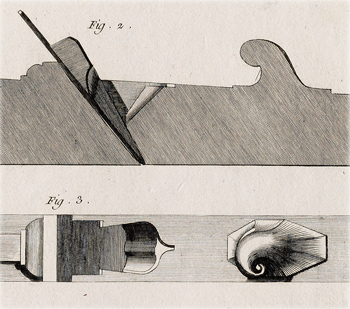Lost Art Press, Fort Mitchell, Kentucky (2012)
André Jacob Roubo, L’art du menuisier, Paris, [1769–75]
When André Roubo, French master cabinetmaker, finished his legendary woodworking treatise, L’art du menuisier in 1775, it was the most comprehensive study ever to appear on woodwork or any other handicraft of the eighteenth century. The 382 engraved plates portray the smallest and finest details of hundreds of wood crafting tools and how they are used to create exquisite furniture, spiral staircases, parquet foors, marquetry, veneers, window frames, carriages, garden trellises, etc. (Stürmur, 1978)

Roubo’s approach to the art of woodworking began with explaining the importance of applying theoretical principles to actual tasks: without the help of “the sciences of reasoning and taste (mathematics, architecture, and drawing), it is not possible to make real progress in the art of woodworking, where the torch of theory must be joined to the habit of practice.” (Belhoste, 2012)
Lost Art Press, a publisher of books and treatises on traditional woodworking techniques, embarked on a six-year project to translate Roubo’s masterpiece from eighteenth-century French to modern-day English; 42-line took high-resolution photographs of all of the engraved plates and the typographic ornamentation for the full-size facsimile (17 × 12 inches). Published in 2013, the first volume, To Make as Perfectly as Possible: Roubo on Marquetry, covers veneer and marquetry and has sections on grinding, sharpening, staining, finishing, wood selection, a German workbench, clock-case construction, engraving and casting brasses. It is available in Standard, Deluxe and E-book editions here: www.lostartpress.com/books_s/12.htm
Right, and its detail, Plate 14. Roubo’s precise rendering of the bench plane retains the essential features shown in Joseph Moxon’s 3rd Edition (1703) Mechanick Exercises—the rounded tote or handle and the curved fore-horn—characteristics familiar to European and English woodworkers since the 1630s. (Welsh, 2008)
